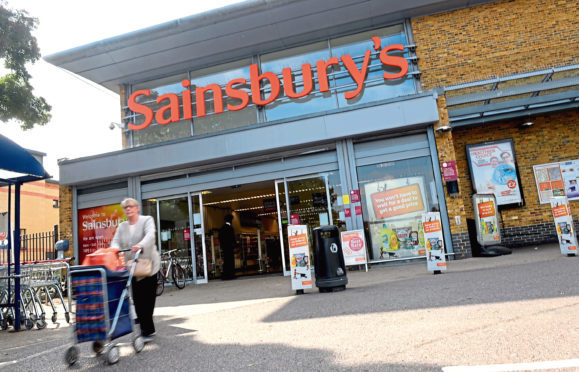Up to 2,500 jobs in core supermarket supply chains could be at risk in the wake of the proposed merger of Sainsbury’s and Asda, new analysis has found.
Last week details of the shock £12 billion merger were announced putting thousands of jobs in doubt.
Bosses at the grocery giants initially insisted no stores would close as a result of the deal, but later admitted regulatory authorities could force them to offload stores as part of a competition probe.
Sainsbury’s has estimated a range of stores could be sold as part of its modelling ahead of the deal.
This estimate, based on possible outcomes from the Competition and Markets Authority (CMA) investigation, has been used by bosses to calculate that £500m in cost savings will be produced when the companies merge.
While an exact number of store closures was not divulged, numbers crunched by research firm GlobalData show “at least” 75 stores where Sainsbury’s and Asda overlap are at risk.
Since the announcement analysts at the New Economics Foundation (NEF) also looked at the potential impact on jobs in the supply chain of major supermarkets.
This is in the event that core suppliers of food products and logistical services are impacted by the 10% price cut.
It showed that just a 5% cut in output for these suppliers could lead to a loss of more than 1,200 jobs, while a 10% cut could lead to a loss of up to 2,500 jobs.
The total job losses related to a cut in prices for supermarket suppliers could be even higher as these estimates do not cover the total supply chain, or the further impact of lost demand in local economies from reduced spending by companies, employees and their families.
Analysts claim this could lead to further business closures and job losses outside of supermarket supply chains.
Alfie Stirling, of the New Economics Foundation, said: “If the proposed merger between Sainsbury’s and Asda is allowed to proceed, we are likely to see a classic case of monopoly-like power in a market where things are already heavily stacked towards the ‘big guys’.
“This is part of a broader picture, where time and again UK capitalism shows itself to be geared against small business in a way rarely seen in the rest of western Europe.
“Small and medium-sized firms make up more than 99% of all UK companies, 60% of employment and nearly half of turnover, yet they are repeatedly required to play second fiddle.”
“Some 75 Asda stores have a Sainsbury’s (excluding locals) in the same sector.
“We think these 75 stores would be the absolute minimum that the CMA will want disposed of,” added Mr Stirling.
The deal between the UK’s number two and three supermarkets will create a retail titan with a bigger market share than Tesco.
It would have combined revenues of £51bn and 2,800 Sainsbury’s, Asda and Argos stores.










